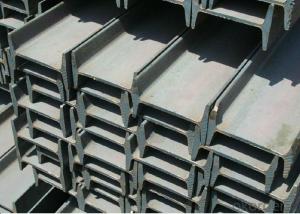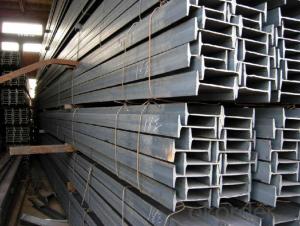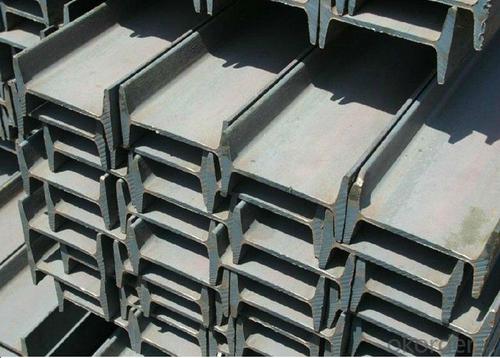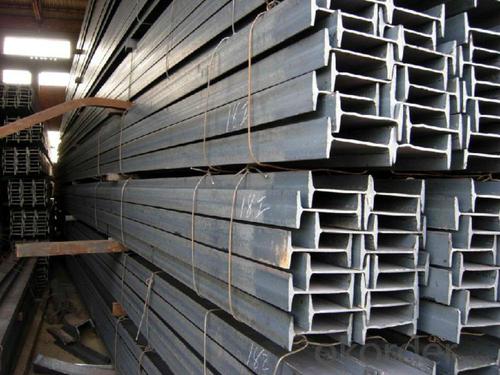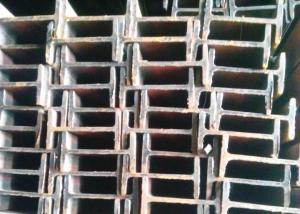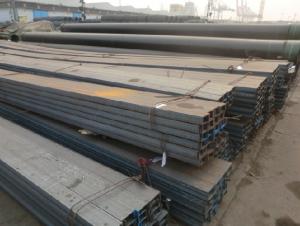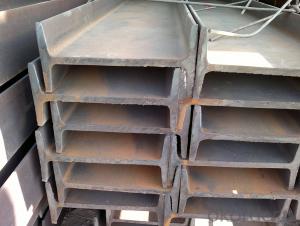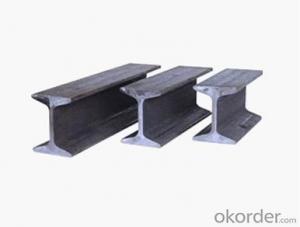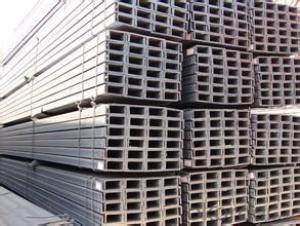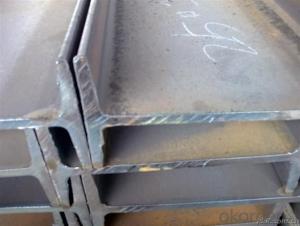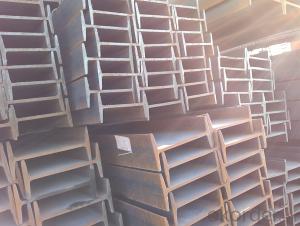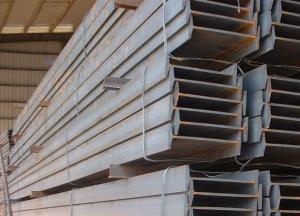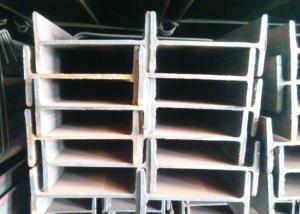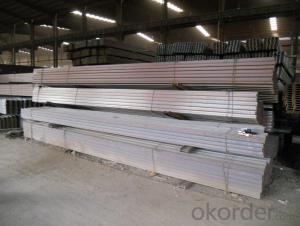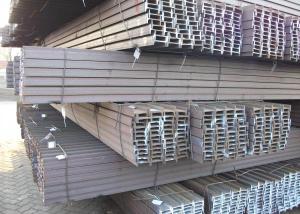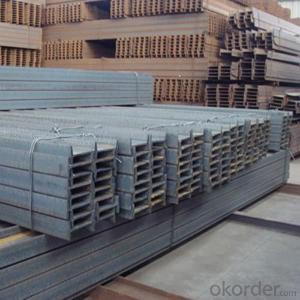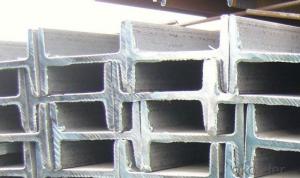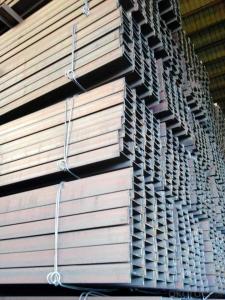Hot Rolled Steel I-Beams with best price
- Loading Port:
- Tianjin
- Payment Terms:
- TT OR LC
- Min Order Qty:
- 25 m.t
- Supply Capability:
- 10000 m.t/month
OKorder Service Pledge
OKorder Financial Service
You Might Also Like
Specification
OKorder is offering high quality Hot Rolled Steel I-Beams at great prices with worldwide shipping. Our supplier is a world-class manufacturer of steel, with our products utilized the world over. OKorder annually supplies products to European, North American and Asian markets. We provide quotations within 24 hours of receiving an inquiry and guarantee competitive prices.
Product Applications:
IPE/IPEAA Beam Steel are widely used in various construction structures, bridges, autos, brackets, mechanisms and so on.
Product Advantages:
OKorder's Steel I-Beams are durable, strong, and resist corrosion.
Main Product Features:
· Premium quality
· Prompt delivery & seaworthy packing (30 days after receiving deposit)
· Corrosion resistance
· Can be recycled and reused
· Mill test certification
· Professional Service
· Competitive pricing
Product Specifications:
1. Product name: IPE/IPEAA Beam Steel
2. Standard: EN10025, GB Standard, ASTM, JIS etc.
3. Grade: Q235B, A36, S235JR, Q345, SS400 or other equivalent.
4. Length: 5.8M, 6M, 9M, 10M, 12M or as your requirements
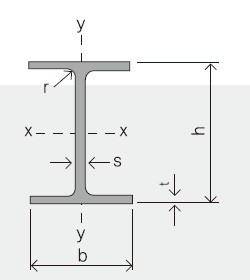
Section | Standard Sectional Dimensions(mm) | ||||
h | b | s | t | Mass Kg/m | |
IPE80 | 80 | 46 | 3.80 | 5.20 | 6.00 |
IPE100 | 100 | 55 | 4.10 | 5.70 | 8.10 |
IPE120 | 120 | 64 | 4.80 | 6.30 | 10.40 |
IPE140 | 140 | 73 | 4.70 | 6.90 | 12.90 |
IPE160 | 160 | 82 | 5.00 | 7.40 | 15.80 |
IPE180 | 180 | 91 | 5.30 | 8.00 | 18.80 |
IPE200 | 200 | 100 | 5.60 | 8.50 | 22.40 |
IPE220 | 220 | 110 | 5.90 | 9.20 | 26.20 |
IPE240 | 240 | 120 | 6.20 | 9.80 | 30.70 |
IPE270 | 270 | 135 | 6.60 | 10.20 | 36.10 |
IPEAA80 | 80 | 46 | 3.20 | 4.20 | 4.95 |
IPEAA100 | 100 | 55 | 3.60 | 4.50 | 6.72 |
IPEAA120 | 120 | 64 | 3.80 | 4.80 | 8.36 |
IPEAA140 | 140 | 73 | 3.80 | 5.20 | 10.05 |
IPEAA160 | 160 | 82 | 4.00 | 5.60 | 12.31 |
IPEAA180 | 180 | 91 | 4.30 | 6.50 | 15.40 |
IPEAA200 | 200 | 100 | 4.50 | 6.70 | 17.95 |
5.Color marking: There will be color marking on both end of the bundle for the cargo delivered by bulk vessel. That makes it easily to distinguish at the destination port.
Tag mark: there will be tag mark tied up on the bundles. The information usually including supplier logo and name, product name, made in China, shipping marks and other information request by the customer.
If loading by container the marking is not needed, but we will prepare it as customer request.
6. Shipment: In containers or in bulk cargo
FAQ:
Q1: Why buy Materials & Equipment from OKorder.com?
A1: All products are carefully selected from China's most reliable manufacturing enterprises. Through its ISO certifications, OKorder.com adheres to the highest standards and a commitment to supply chain safety and customer satisfaction. We can guarantee the quality!
Q2:What's your payment terms ?
A2: We can accept T/T,LC at sight and time LC.
Q3: Can you offer the third part inspection certificates ?
A3: Yes, we can apply third part inspection before shipping, such as SGS, BV, etc .
Images:
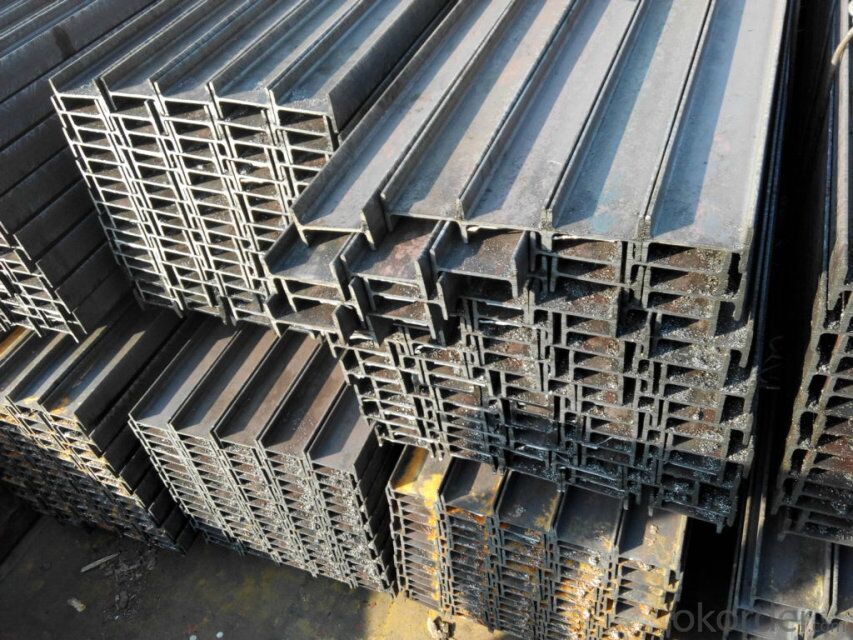
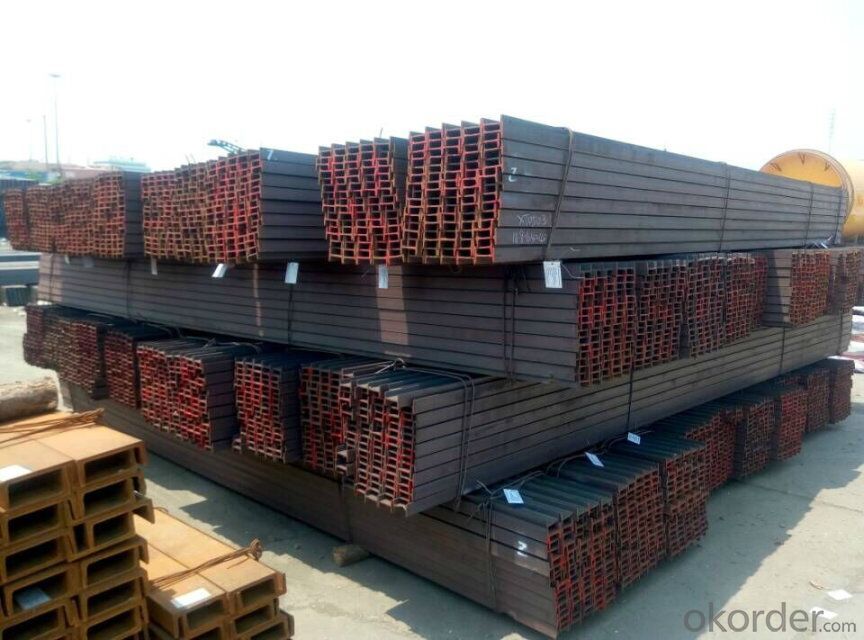
- Q: How are steel I-beams inspected for quality control?
- Steel I-beams are inspected for quality control through a series of visual inspections, dimensional measurements, and non-destructive testing techniques. This may include checking for any visible defects, such as cracks, surface roughness, or uneven welds. Additionally, measurements are taken to ensure the beam's dimensions and tolerances are within the specified range. Non-destructive testing methods, such as ultrasonic testing or magnetic particle inspection, are also employed to detect any internal defects or discontinuities that may affect its structural integrity. Overall, a thorough inspection process is carried out to ensure that steel I-beams meet the required quality standards.
- Q: What are the common connection methods for steel I-beams?
- Steel I-beams can be connected using different methods depending on the specific application and structural requirements. Some commonly used connection methods include: 1. Welding: Steel I-beams are often connected using welding, which involves melting and fusing the edges of the beams together using heat. This creates a strong and permanent bond. Welding can be done manually or using automated processes like robotic welding. 2. Bolting: Another common method is bolting, where bolts and nuts are used to secure the beams together. This method allows for easy disassembly and reassembly if necessary. 3. Riveting: Riveting involves using metal rivets to join the beams. Holes are drilled in the beams and rivets are inserted, then hammered or pressed to create a secure connection. Riveting was commonly used in the past but has been mostly replaced by welding and bolting due to the labor-intensive process. 4. Adhesive bonding: In specialized applications or situations where welding or bolting is not feasible, adhesive bonding is used. Industrial adhesives are used to bond the beams together. This method provides a strong and lightweight connection but may require additional surface preparation and curing time. It's important to consider various factors such as load-bearing capacity, steel type, structural design, and project constraints when choosing a connection method. Consulting with a structural engineer or following industry standards and regulations is crucial to ensure safe and effective connections for steel I-beams.
- Q: What is the supply length of 30# I-beam?
- 30# I-beam is only 12 meters, divided into 2 models. 30#A size 300*126*930#b size 300*128*1130# I-beam no C, no 30#C mills are upstairs. I am a Xi'an 30#A section of the national standard 30#B, 2020 yuan (including tax), a national standard of 2220 yuan (including tax)
- Q: How are steel I-beams measured?
- When measuring steel I-beams, their height, width, and weight per unit length are typically taken into account. The height, also referred to as the beam depth, is measured from the top to the bottom of the vertical part of the I-beam. The width, known as the flange width, is measured from one end of the horizontal section to the other. These measurements play a vital role in determining the overall size and load-bearing capacity of the I-beam. Apart from the height and width, the weight per unit length is also measured to determine the mass of the I-beam. This is crucial in calculating the structural strength and load-carrying capacity of the beam. To ensure uniformity in measurements and facilitate easy comparison and selection of I-beams for different construction purposes, industry standards such as ASTM or EN are typically followed. These standards guarantee consistency and enable straightforward evaluation and choice of I-beams. It should be noted that steel I-beams can come in various sizes and shapes, including wide flange beams, H-beams, and S-beams, among others. Each type of beam has its own unique measurements and specifications. Therefore, it is indispensable to refer to the manufacturer's specifications or engineering guidelines when accurately measuring and selecting the appropriate steel I-beam for a specific construction project.
- Q: How much is the 22 I-beam wing width
- 22A 110mm is a high wing I-beam wide ventral 220mm ventral thickness is 7.5mm, weight is 33.070 kilograms per meter.
- Q: Are steel I-beams resistant to mold or mildew?
- Steel I-beams, being inorganic materials, do not create a favorable habitat for the growth of mold or mildew. For mold and mildew to thrive, they need organic substances and moisture, which steel I-beams lack. Consequently, steel I-beams exhibit a high level of resistance against mold or mildew infestation. Their non-absorbent surface and absence of organic matter render them an outstanding option for areas that are susceptible to moisture or high humidity, where mold and mildew commonly flourish.
- Q: Are Steel I-Beams susceptible to termite damage?
- No, steel I-beams are not susceptible to termite damage. Termites primarily feed on wood and other cellulose-based materials, and they have no interest in consuming steel. Therefore, steel I-beams provide a reliable and durable structural solution as they are not affected by termite infestations.
- Q: Can steel I-beams be used in healthcare or hospital renovation projects?
- Yes, steel I-beams can be used in healthcare or hospital renovation projects. Steel I-beams have several advantages that make them suitable for such projects. Firstly, steel is a strong and durable material that can withstand heavy loads, making it ideal for supporting the weight of floors, walls, and ceilings in healthcare facilities. Secondly, steel I-beams are fire-resistant, which is crucial in hospitals where safety is of utmost importance. Additionally, steel is resistant to pests, such as termites, which can be a concern in older buildings. Moreover, steel I-beams can be easily fabricated and customized to fit specific project requirements, allowing for flexibility in design. Lastly, steel is a sustainable and environmentally friendly material, as it can be recycled and reused, reducing the project's carbon footprint. Overall, steel I-beams provide a reliable and efficient solution for healthcare or hospital renovation projects.
- Q: Is I-beam steel?
- Ordinary I-beam, light I-beam flange is variable cross-section, depending on the thickness of the web, the external thin; H steel: HW, HM, HN, HEA, HEB, HEM and so on, the flange of I-beam is a uniform section
- Q: Can steel I-beams be used in sustainable or green building practices?
- Certainly, steel I-beams are a feasible choice for sustainable and green building practices. Steel, being an incredibly sustainable material with an extended lifespan, can be recycled perpetually without compromising its strength or quality. The utilization of steel I-beams in construction allows for larger open spaces and more flexible designs, thereby minimizing the necessity for additional columns or supports. This maximizes natural light and airflow, subsequently reducing the reliance on artificial lighting and air conditioning, resulting in reduced energy consumption. Moreover, steel I-beams exhibit exceptional durability and resistance to fire, pests, and extreme weather conditions. This durability ensures that buildings constructed with steel I-beams have prolonged lifespans and require fewer repairs and maintenance, consequently reducing waste and environmental impact. Furthermore, the incorporation of steel I-beams can enhance energy efficiency by facilitating the installation of insulation materials, which aid in maintaining a comfortable indoor temperature and minimizing the need for heating or cooling. Lastly, steel is a locally sourced material, thereby reducing transportation emissions associated with long-distance shipping. Additionally, recent advancements in steel production have made it more energy-efficient and environmentally friendly, further bolstering the sustainability of using steel I-beams in construction. In conclusion, steel I-beams offer numerous advantages for sustainable and green building practices. From their recyclability and durability to their energy efficiency and local sourcing potential, steel I-beams present a viable option for individuals seeking to construct environmentally friendly and sustainable buildings.
Send your message to us
Hot Rolled Steel I-Beams with best price
- Loading Port:
- Tianjin
- Payment Terms:
- TT OR LC
- Min Order Qty:
- 25 m.t
- Supply Capability:
- 10000 m.t/month
OKorder Service Pledge
OKorder Financial Service
Similar products
Hot products
Hot Searches
Related keywords
